Importing Updates to Assets
Importing Updates to Assets
SyAM's asset management system offers the capability to update asset data directly in the database using a CSV file. This feature enables organizations to efficiently keep their assets up to date with the latest information. Importing updates allows for bulk updating of asset information, streamlining the process, and saving time.
Creating the File to be Imported
From the Asset Dashboard, apply filters to display the specific range of assets you wish to update.
Click on the Download File icon ![]() to export the asset data as a CSV file.
to export the asset data as a CSV file.
When importing the updates for your assets, ensure that the asset name column does not contain duplicates or empty rows.
In this example, we will focus on updating information specifically for our printers.
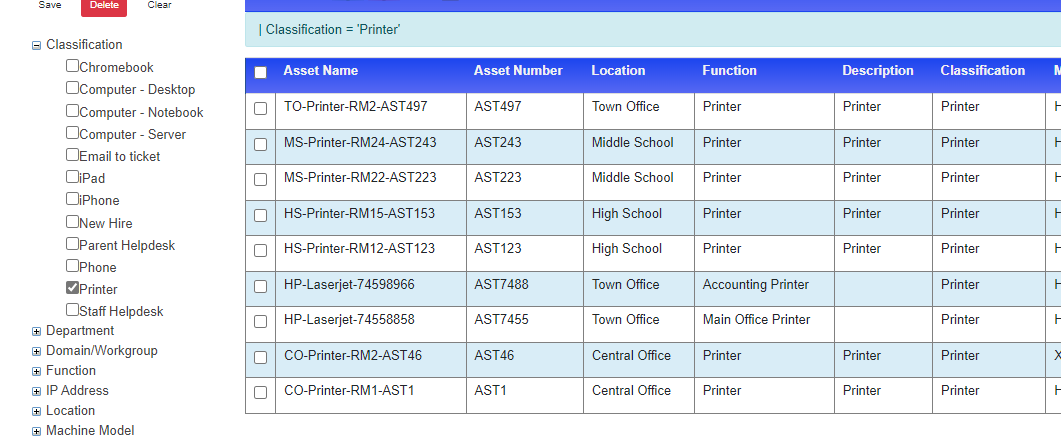
Open the downloaded CSV file in Excel.

Delete all rows of Assets that you do not wish to update.
Delete any columns in the CSV file that are not going to be used for importing the data. Only retain the column headings that contain the fields being updated.
Enter or paste the data of the assets you wish to add into the corresponding columns.
**PLEASE NOTE** - To ensure accurate updates, the CSV file must include the Asset Name field as the key import field. This field is necessary for the system to identify which assets require updates to be applied.
When updating Date fields, it is crucial to have the correct format. To ensure accurate formatting, it is recommended to export an asset that has the desired fields populated correctly. This exported asset can serve as a reference for the correct formatting when updating Date fields for other assets.
After entering your data in the CSV file, check for duplicate Asset Names and ensure that there are no duplicates. Additionally, review the Asset Number and Serial Number columns for any duplicates.

Another check to perform on your file is to ensure that there are no empty rows or columns at the end. In Excel, remove several rows below the last filled row and remove several columns after the last filled column. Alternatively, you can open the CSV file in Notepad and check the end of the file to ensure there are no excessive commas representing empty fields.It is recommended to import a file with only a few assets initially to verify that the data is being populated correctly.
**PLEASE NOTE** Importing blank values will not remove existing values in the asset database. If a field in the CSV file is left blank during import, it will not overwrite or remove any existing values for that field in the asset database.
Importing the Asset CSV File
Access the Asset Dashboard and click on the Upload File icon. ![]()
Click on "Choose file" and select the CSV file that you want to import.

After selecting the file, click on "Upload File". This will open the Column Mapping table.
If you used the Asset file template, all mapping will be in place. If you used your own column headings, you will need to select the relevant asset field to be mapped to each column heading.
Select "Asset Name" as your key column, and then click on "Import Asset Data".
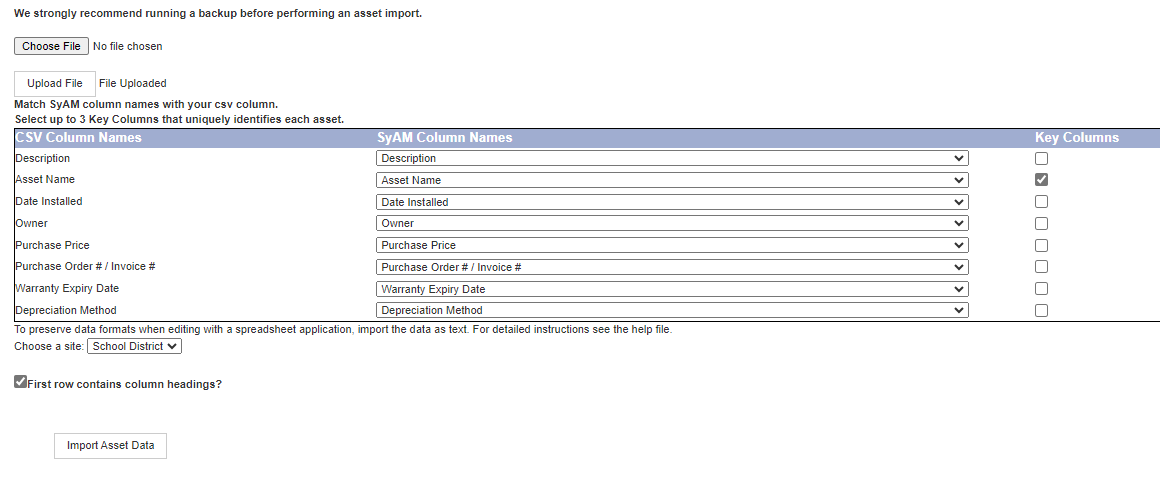
During the import process, the system will check if the Asset Name already exists. If it does, the existing asset will be updated with the fields from the CSV file. If the Asset Name does not exist, a new asset will be created, and the fields will be populated from the CSV file.
The time taken to import will vary based on the number of assets and columns being imported.
Once the import process is complete, you will be provided with information on the number of assets that were added and the number of assets that were updated.

Verify Imported Data
Confirm that the imported data is accurate and matches the expected values by reviewing the details of the imported assets.
From the Asset Dashboard, apply the necessary filters to navigate to the assets that were imported. In this scenario, since updates were made to printers, you can use the classification attribute to filter and display assets that are classified as "printer."

Click on any of the updated printers from the Asset Dashboard and view its details to confirm that the data is updated correctly in the respective fields
.
In our example, we can observe that the owner, date installed, and description fields have been updated with the corresponding values from our CSV file.
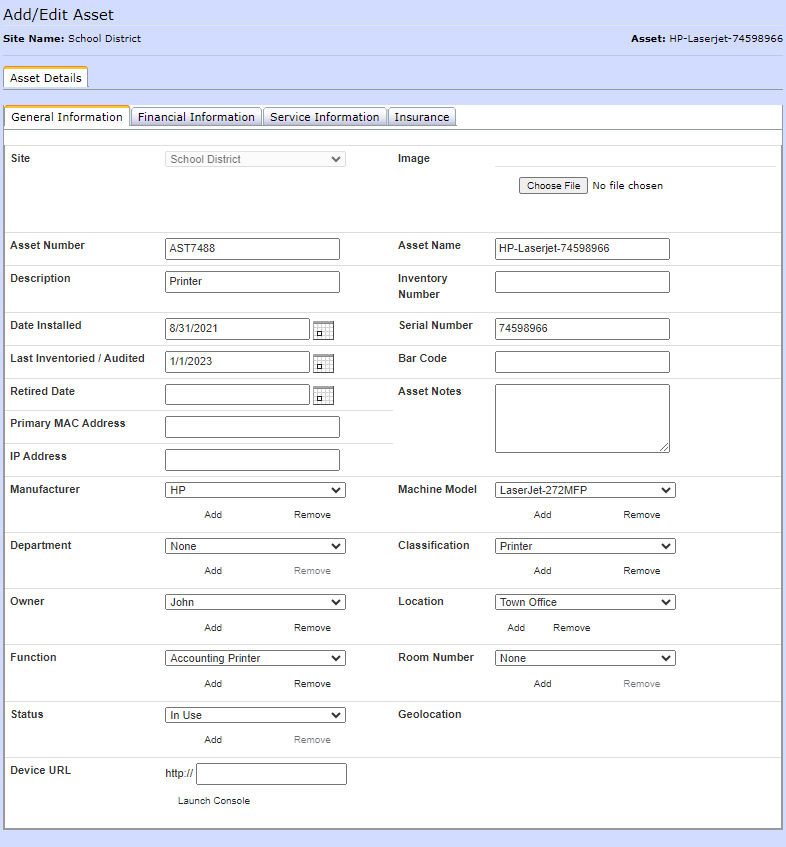
If we navigate to the financial information tab, we can verify that the Purchase price, Purchase Order, Warranty Expiry date, and depreciation method have been successfully updated with the corresponding values from our CSV file.

Troubleshooting
If your file fails to import, check for the following potential issues:
Check the file for duplicated Asset Names – use Excel
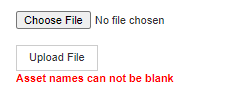
Check for empty rows in and at the end of the data being imported
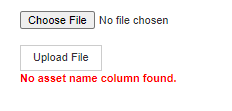
Check the Column headings, it must contain a column heading called “Asset Name”
Assets do not show in Asset Dashboard, check to see if you added the assets to a Location or Asset Classification that your user does not have access to.
Reviewing the Asset Import Log File – The import log file can be found under
C:\sitemanager\assetutility\assetimport.log
Reviewing the file used on the import – A copy of the csv file used on the last import can be found under C:\sitemanager\assetutility\assets.csv
The mapping of the column number to the asset field can be viewed under C:\sitemanager\assetutility\colmap.txt
By addressing these potential issues, you can troubleshoot and resolve any problems encountered during the import process.